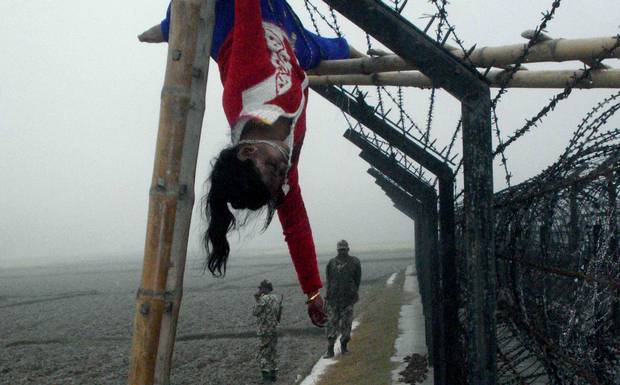
California sterilized women prisoners without consent; Tennessee criminalizes pregnant women who take drugs. These policies go beyond cruelty; they institutionalize and normalize the dehumanization process in a large scale. Here are three recent examples from inside the border, at the border, and outside the borders of the United States.
In Oklahoma on Tuesday, a death row inmate was scheduled to die.
Since 2005, the European Commission has imposed restrictions on the export of anesthetics that may be used “for capital punishment, torture, or other cruel, inhuman or degrading treatment or punishment.” But in the United States, executions must proceed. So, States came up with a secret new deadly cocktail of drugs to kill. The recipe is secret, but not the process of keeping it secret, especially since the two Oklahoma inmates sentenced to die challenged the secrecy weeks earlier.
After Tuesday’s execution, reporters and commentators made it clear, the man tortured to death, tased earlier in the day, had committed a heinous crime. And so butchering him was justified. The business of justifying the cruelty came with the help of numbers and statistics. On the PBS News Hour, Roy Engert recommended we put the issue in perspective, since only 3% of executions encountered problems. Engert’s unchallenged remark validates torture cases as just so many numbers in a deficit account.
On the US – Mexico border, US border patrols are under investigation for having recently killed more people than ever before. An independent review, leaked to the Los Angeles Times, considered 67 shootings by US Border patrols at the Mexican border between January 2010 and October 2012. These resulted in 19 civilian deaths.
The report was going to remain secret, as well as the policies and practices that allowed US patrol to shoot at Jose Antonio Elena Rodriguez, a 16 year-old boy who was on his way home. He was on the other side of the fence, in Mexico. The officers on the US side shot him 10 times. He was killed with two bullets in his head and then butchered with eight more bullets in his back. According to the U.S. Customs and Border Protection, in the past three years, they have shot across the border and killed six people inside Mexico.
U.S Customs and Border Protection explained they opened fire because people in Mexico were throwing rocks and one hit their patrol dog. That explanation exposes the level of dehumanization that has normalized the use of lethal weapons against people who have been made ever more vulnerable, thanks to border fortification, intensified immiseration, and expanded displacement, all in the service of NAFTA and neoliberal development.
Outside the borders, drone strikes, to kill human targets, are carried out by the US Air Force for the CIA with the help of the NSA. As one US Air Force personnel declared, “I cannot tell you what I am doing, but I can tell you that’s super-secret.” The operations are super-secret, but the fact of the secrets is quite public.
What is secret is the name and location of the future victims. The entire process reflects US drone program whose impunity has been intensified and broadened in recent years. In the United States, every week, Tuesday is “Terror Tuesday,” the day when it is decided who will die in Yemen or Pakistan. US agents establish a list of potential victims determined through their “pattern of life,” a series of behaviors identified as potential signs of militant activities.
These various secretive methods are as dubious as the lethal drug cocktail in Oklahoma. Many stories have related how civilians in a wedding, or in a field, women and children, have been butchered by a robotic drone attack.
All these stories are linked by what Denis Salas has called the three characteristics of moral indifference: unlimited authorized use of violence, normalization of acts of violence, and dehumanization of targets. These stories reveal the power of secrecy to serve a neoliberal global disorder. Beyond cruelty, the scale of dehumanization is both intimate and global.
(Photo Credit: Paul Ingram / Tucson Sentinel)






